Various holes

FOXHOLE, n., RABBIT HOLE, n., SPIDER HOLE, n. A few weeks ago, I wrote a newsletter about “pigeonhole” and ever since, I’ve been thinking about the various metaphors we’ve assigned to other animal dwellings. World War I trench warfare gave rise to “foxhole” (also “fox-hole”) as a name for the place where soldiers take shelter from enemy fire. Yes, a trench is a sort of hole, but why foxes? Why not badgers or weasels or, for that matter, rabbits, which also live in holes?
Well, I can at least answer the question regarding rabbits: English already had a metaphor about rabbit holes by the time World War I came around. It comes from Lewis Carroll’s Alice’s Adventures in Wonderland, published in 1865. (Lewis Carroll also coined “portmanteau,” which is, in a roundabout way, the origin of “Word Suitcase.”) Regarding “rabbit hole,” Kathryn Schulz investigates its newfound prominence in the digital age in this delightful 2015 article in The New Yorker:
In its most purely Carrollian sense, then, to fall down a rabbit hole means to stumble into a bizarre and disorienting alternate reality.
These days, however, when we say that we fell down the rabbit hole, we seldom mean that we wound up somewhere psychedelically strange. We mean that we got interested in something to the point of distraction—usually by accident, and usually to a degree that the subject in question might not seem to merit.
The most shocking revelation in there is that actual rabbit holes aren’t even that deep. Badgers and prairie dogs make way more extensive tunnels. But I suppose that’s one of the dreamlike qualities of entering Wonderland. In real life, the rabbit hole is shallow. (Also, full of rabbit poop.)

An illustration of the white rabbit from Alice’s Adventures in Wonderland.
As for why foxholes belong to foxes and not some other kind of hole-digging, sharp-toothed animal, I cannot say. They’re not the only kind of animal dwellings in military parlance, though. There’s also something called a “spider hole”—you may remember that Saddam Hussein was found in one in 2003—and apparently it differs from a foxhole in that it’s more about concealment than cover from fire, and it’s usually only big enough for one person. The term dates back to World War II. Spider holes, at least, have a somewhat accurate connection to nature: there are several species of spiders that build concealed holes in the ground to catch their prey. They’re often called trapdoor spiders. I did not put a picture of them in this newsletter because I love you.
So anyway, now this newsletter has covered pigeonholes, foxholes, rabbit holes, and spider holes. Perhaps in some future week I’ll look into dens, nests, or lairs.
What sort of reading did I burrow into over the past two weeks? It was all small-r romance.
Something Human (bi m/gay m, both cis, fantasy) by A.J. Demas. This is about two young men who meet when they save each other’s lives in battle. (No foxholes or spider holes are involved.) In the aftermath of the battle, they care for each other’s wounds even though they should be enemies. It has the lovely worldbuilding and aching tenderness that are hallmarks of Demas’s work and I could not put it down. Content notes: violence/blood/wounds, homophobia, sex.
Appetites & Vices (m/f, both cis and het, historical) by Felicia Grossman. I love to see Jewish characters in historical romance! And in the United States! The plot revolves around a fake engagement, so Jewish laws about marriage and divorce play a role. A socially awkward math genius heroine and a smooth playboy hero secretly struggling with an opium addiction make a compelling pair of opposites. Content notes: drug addiction, death of a parent from cancer, death of a spouse and child, some characters make antisemitic remarks, sex.
Once Upon a Marquess (m/f, both cis and het, historical) + After the Wedding (het m/bi f, both cis, historical) by Courtney Milan. According to GoodReads, I first read Once Upon a Marquess, the beginning of Courtney Milan’s Worth Saga, in December 2015. Apparently I loved it. I didn’t remember that when I picked it up this month, but then certain details—the heroine inventing clockwork figurines—rang a bell. It’s an excellent book and I’m sorry for forgetting I’d read it before. (In my defense, in December 2015 I still hadn’t finished writing my doctoral dissertation and I was very busy weeping on the bathroom floor. I’m glad for my past self that I took a break to read this book.) The boldest thing about Once Upon a Marquess is that the heroine’s brother has been convicted of treason against the British Empire. In any other historical romance, the heroine would work to exonerate him; in this one, she comes to understand that he did commit treason and he was right to do it. Empire—and the white supremacy that legitimizes all its violence—is the villain of this series. In After the Wedding, the hero is a Black British man whose powerful white uncle won’t acknowledge him in public, but will happily exploit him. The heroine is another daughter of the treasonous Worth family, a genteel white woman who has lost contact with her siblings and fallen on hard times. They’re incredibly kind to each other in the face of an unkind world, and it’s lovely. Also she’s bisexual and there are tons of other queer characters! The good stuff. Content notes for Marquess: death of a parent, death of a sibling, drug addiction, ableism (cruel remarks toward neurodivergent characters), sex. Content notes for Wedding: estrangement from family, racism (cruel remarks), misogyny (cruel remarks), sex.
Until next time! (That would be Sunday, September 19.)

